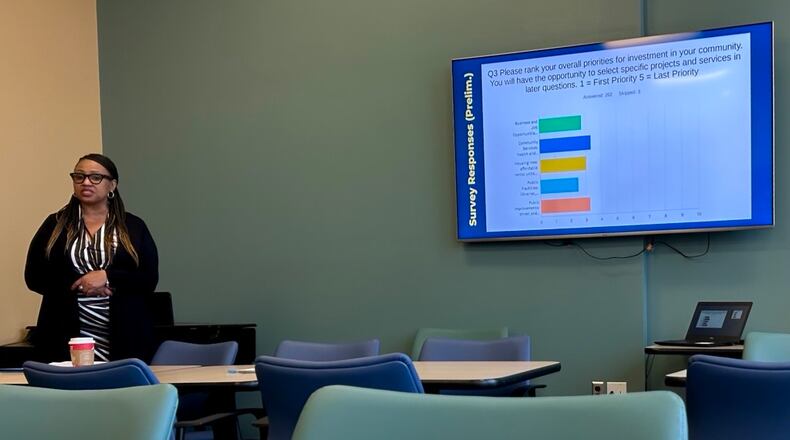The process started with a survey that opened May 6, followed by two focus groups and a town hall meeting last week. The survey will close to responses on June 6.
Preliminary survey results showed priorities like health care and improvements of streets, sidewalks and curbs. Respondents identified a need for services for mental health, children and youth, and people experiencing homelessness.
As for housing, survey respondents so far have identified code enforcement and a need for increased rental housing stock, both with and without supportive services.
Some meeting attendees expressed concerns the survey was reaching the same group of people who took the city’s 2024 resident survey, as responses were similar. Otis Williams said he and others are concerned about “distressed” neighborhoods on the city’s south side.
“It needs to be addressed,” Williams said. “The homeless situation has been bad here and people won’t step up and do what’s necessary.”
On June 9, a draft of the plan will be available on the city’s website for public input, followed by another town hall meeting June 14. Those seeking to weigh in on the allocation of funds can do so at 10:30 a.m. June 14 at the Fire Station 8 Training Room, 2040 S. Limestone St.
The final plan will be submitted Aug. 16.
“The consolidated plan is designed to help states and local jurisdictions to assess their affordable housing and community development needs and maker conditions, and to also make data-driven decisions, place-based decisions,” said Maria Collins, contractor for Grow America, which the city is contracting to run the process.
The plan is contingent on the city receiving federal grants for which it is approved. This has not always been the case with local agencies recently, as the Trump administration has dramatically cut a variety of federal programs.
Logan Cobbs, Springfield community development director, said the city for now is assuming it will receive the approved funds. She said public input is helpful even if funds are reduced or cut.
“I think that speaks to why these types of conversations and why these public input sessions are so important, because it gives us an understanding of what the priorities are in the years to come and we can start thinking through what flexibility that we would have with the general fund that is already very stretched thin as we’ve said publicly many times,” Cobbs said.
Input on projects for the CDBG program can be more wide-ranging, as the grant is more flexible than other programs, Collins said. Eligible activities include housing, public services and economic development.
“The [CDBG] is the largest bucket of money that state and local jurisdictions receive from the federal government,” Collins said. “In administering these funds, the objective is that the project, activity, program or service has to benefit low- and moderate-income individuals within that community.”
The HOME grant is primarily to create and preserve affordable housing and the ESG program is designed to assist people currently experiencing or at risk of homelessness, Collins said.
The city is prepared to annually receive around $1.8 million for CDBG, $400,000 for ESG and around $150,000 in ESG funds, Collins said.
The city plans to print paper copies of surveys to later input manually. This could better reach older citizens and those without access to technology necessary to take the survey, Collins said.
The survey process that Grow America used in Cincinnati included street outreach and a library event where they helped people include their input, Collins said. This is something to consider for Springfield.
Collins said a lack of quality affordable housing and homelessness are big challenges in the Midwest and beyond.
“We’re not coming with a solution today; we’re coming to hear, what do you see as a citizen of this community, what do you see as the greatest need for the community?” Collins said. “The city of Springfield can take into consideration (and) include in their consolidated plan as an activity that they can invest in with their HUD entitlement dollars.”
About the Author

